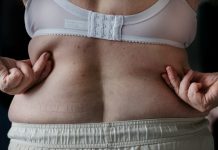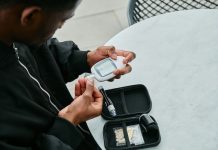
In a new study, researchers found that high-intensity interval exercise may help burn more fat when performed in cold weather.
The research was conducted by a team at Laurentian University, Canada.
Regular physical activity improves the metabolism of consumed nutrients and helps regulate lipid (fat) levels in the blood.
Previous research has shown that high-intensity interval training is better for lipid metabolism and oxidation (burning of fat) than moderate-intensity continuous exercise.
Ambient temperature also plays a role in metabolism during exercise and while at rest, but it is unclear how temperature affects blood lipid levels or post-meal metabolism the next day.
In the study, a small group of moderately fit, overweight people participated in two evening high-intensity exercise sessions separated by a week.
In both sessions, the volunteers completed 10 one-minute cycling sprints at 90% effort. A 90-second recovery period of cycling at 30% effort followed each sprint.
At the end of the sprint session, the volunteers were allowed to cool down with slow cycling or walking.
In one exercise session, the ambient temperature was “thermoneutral” at approximately 70 degrees F. A thermoneutral environment is warm enough that it does not alter metabolic processes.
The room temperature in the other session was a cold 32 degrees F.
The researchers measured the participants’ skin temperature, core body temperature, heart rate, and amount of oxygen delivered to the quadriceps muscles in the thigh during both sessions.
Glucose (blood sugar), oxygen and carbon dioxide levels and gas exchange rates were also recorded.
After each workout, the volunteers ate a protein- and carb-rich nutrition bar before going to sleep.
The next morning, the team provided the participants with a high-fat breakfast, after which blood samples were taken to measure insulin, glucose, and triglyceride levels and to compute lipid oxidation rates.
The team found that high-intensity exercise in the cold increased lipid oxidation by 358% during the exercise bout in comparison to high-intensity exercise in a thermoneutral environment.
However, longer-term metabolic responses after eating the high-fat meal—including blood sugar regulation, fat burning, and triglyceride levels—did not change substantially after the cold condition.
One author of the study is Dominique D. Gagnon.
The study is published in the Journal of Applied Physiology.
Copyright © 2020 Knowridge Science Report. All rights reserved.



